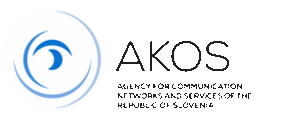|
|
|||||||||
Analog RadioAnalog FM radio is still a very popular way of program broadcasting. Cheap transmission equipment, simple computerized production and broadcasting, and simple and cheap radios have contributed to the wide use of this technology. However, it takes more than just technical equipment to set up a radio station. What is required to set up a radio station?
The first thing required is a radio program. Procedures for establishing a radio program are simple, however necessary. Frequencies for FM Radio
FM radio is basically analog and is broadcast in the 87.5-108 MHz radio frequency band. The transmitter transmits a program on a certain frequency, and nearby receivers set to this frequency receive the program. To prevent interference in reception, the same or close frequency can only be used in areas sufficiently distant from the coverage area. This strongly limits the number of available frequencies. Sine radio waves do not acknowledge state borders, so the use of frequencies must be coordinated with other countries. How to acquire frequencies?
The Agency may allocate the rights to use radio frequencies held by the Republic of Slovenia to interested parties through public tenders. It should however be stressed that practically all the FM radio frequencies granted to Slovenia have already been allocated. For this reason the chances of introducing a new radio station to the radio frequency spectrum are extremely small. ObligationsTenders for radio frequencies are open to new and existing radio program publishers. Use of each allocated frequency must commence within one year of the day the decision was issued. The holder of the decision on allocating radio frequencies (DARF) must also pay an annual fee for using radio frequencies. The annual fee depends on several factor and amounts to approximately €200 for smaller transmission points, €2,000 for medium transmission points, and €20,000 for large transmission points. Looking AheadMostly due to the need for extra capacities for radio program transmission, numerous countries have started considering a transition to digital radio transmission. This can be done in several ways:
|
|||||||||
|
Agency for communication networks and services of the Republic of Slovenia
Stegne 7, 1000 Ljubljana, Slovenia T: 01 583 63 00 F: 01 511 11 01 E: info.box@akos-rs.si |
|
 RSS
RSS Slovenian
Slovenian


 Top of the page
Top of the page
 Print
Print